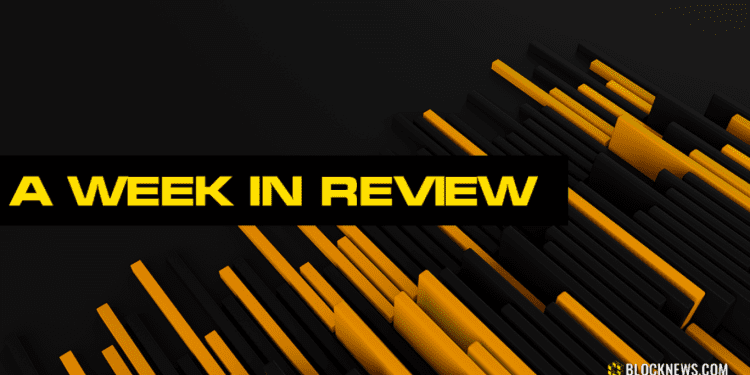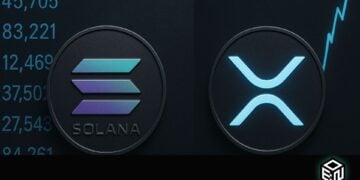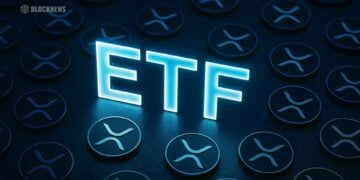Introduction
In this recap of the crypto world, we will explore the events and news that had the most significant impact in the past week of February 6th. Our focus will be on the following development
- SEC considering stopping crypto staking in U.S.
- CBDC adoption continues
- Sandbox partners with Saudi Arabia DGA
- Bitcoin NFTs (Ordinals)
First Crackdown by the SEC on Staking
This Thursday, the US Securities and Exchange Commission (SEC) reached a $30 million settlement with cryptocurrency exchange Kraken for failing to register its cryptocurrency staking service. This marks the SEC’s first crackdown on staking, a standard service offered by centralized and decentralized exchanges, including major US exchanges like Coinbase and Binance US. The impact of the SEC’s decision is already being felt in the market.

SEC Chair Gary Gensler stated in a video message that most staking providers must provide adequate disclosures to customers, such as how their assets are protected. Gensler added that these providers should register their staking services with the SEC.
Coinbase CEO Brian Armstrong has called a ban on staking for US retail customers “a terrible path for the US” and offers a staking service to US customers. A potential ban on staking would negatively impact Coinbase and Ether, as it would be a loss of a high-margin revenue source for Coinbase and a hit to the broader Adoption of the Ethereum network.
Analysts expect that the crypto industry will put up a major legal challenge if the SEC does move to restrict staking. Armstrong has emphasized that staking is a crucial innovation in the crypto space, bringing positive improvements such as scalability, increased security, and reduced carbon footprints.
Read more on this story here.
CBDC: Future of Financial Transactions
In today’s rapidly evolving technological landscape, central bank digital currencies (CBDCs) are becoming a hot topic in the financial world. The rise of cryptocurrencies and digital payment solutions has sparked the interest of governments and central banks globally, leading many institutions to explore the creation of their digital currency. Among many, China and India have recently taken steps to boost the Adoption of their CBDC among their public.
China Boosts e-CNY Adoption
China has been at the forefront of the CBDC movement, handing out 180 million digital Yuan, e-CNY, during the Lunar New Year period to boost its Adoption. Multiple cities in China encouraged holiday consumption by airdropping digital Yuan coupons. Local governments also used e-CNY to support businesses and enhance recovery, with commercial institutions involved in digital yuan consumption promotions, including transportation, mobile communications, supermarkets, and tourism. Read more on this story here.
India pushes Digital Rupee Adoption
India aims to launch its CBDC at a national level by the end of 2023, with two pilot programs underway. Although the Reserve Bank of India has identified challenges in its early pilot, it has onboarded over 50,000 customers and 10,000 merchants, including Reliance Retail, the country’s largest retail chain. The digital Rupee is meant to modernize India’s current physical currency system and has been launched with awareness campaigns.

In conclusion, the trend toward CBDCs reflects the changing times as governments and central banks look to modernize the financial system and provide greater accessibility, security, and stability for citizens and businesses.
Sandbox Signs Deal with Saudi Arabia
On February 7th, Sandbox signed an agreement with Saudi Arabia’s Digital Government Authority (DGA), according to Sebastien Borget, co-founder and COO of the company. The announcement was made at the 2023 LEAP tech conference in Riyadh, Saudi Arabia.
The Memorandum of Understanding (MOU) agreement is to explore, advise, and support each other in metaverse development. Although full details have yet to be released, MOUs typically precede more enduring partnerships. Borget also promised to provide more information in the coming weeks.

Sandbox is considered one of the pioneers of Metaverse technology and is already working with over 400 brands, including Atari, Ubisoft, and Warner Music Group. The company has seen a fourfold increase in brand onboarding over the past year.
The agreement with Saudi Arabia’s DGA is just the latest in a growing trend of national organizations exploring the metaverse, following the lead of major companies such as Walmart and Amazon. This partnership demonstrates the growth and potential of the metaverse and the projects that are working on it.
Ordinals: A New Era for Bitcoin
The launch of the Ordinal protocol on the Bitcoin main net has caused a stir in the NFT world. The protocol, developed by software engineer Casey Rodarmor, enables the inscription of digital assets on the Bitcoin blockchain, such as images, text, programs, and video games. The metadata within these digital assets is referred to as “Inscriptions.”
Inscriptions are also called “digital artifacts” and are unique, immutable, secure, and decentralized like Bitcoin. In addition to each digital artifact’s unique attributes, the ordinal has rarity. Ordinal rarity is determined by Bitcoin’s periodic events and is classified as Common, Uncommon, Rare, Epic, Legendary, and Mythic.
Areas of Concern
There are two potential concerns with Ordinals: illegal data and chain bloat. The inscription of prohibited or illegal data on the Bitcoin blockchain through Ordinal NFTs raises questions. However, a technical restriction in place requires an off-chain agreement with a miner for inscriptions larger than 1 MB, which holds some promise. While concern about the blockchain becoming bloated with unnecessary information can be negated by miners, as they will optimize for higher fees by including as many ordinary economic transactions as possible if ordinal NFTs create transaction fee pressure.
In addition, two key features currently need to be added for inscriptions: decentralized markets (for buying, selling, and trading) and provenance (determining the author of a note or its membership in a set).

Despite these concerns, the future of Ordinal NFTs looks promising. The Ordinal protocol provides a rich data model that has the potential to revolutionize the world of digital art and collectibles. As the technology continues to evolve, it will be exciting to see how Ordinal NFTs will be used and adopted.














